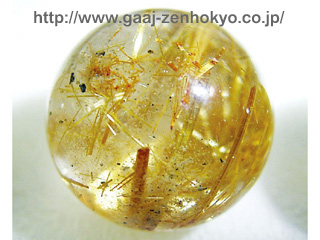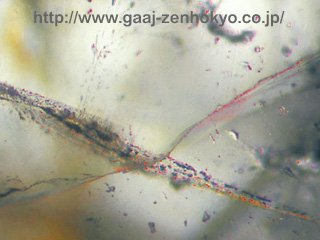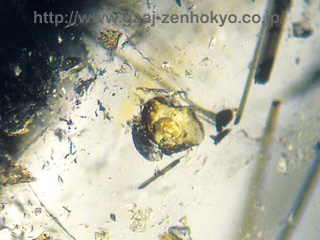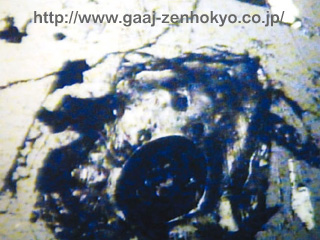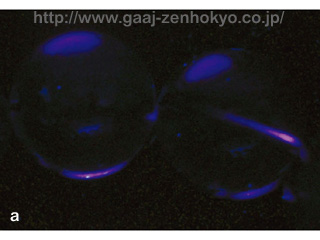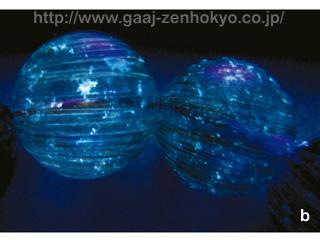|
|||||||||||||||||||||||
|
Rutilated quartz filled with colourless transparent material such as resin or oil is brought in to our laboratory recently more often than before. Its features are introduced here.
Rutilated quartz is one of representative quartz varieties containing inclusion and it is also known as gQuartz with needles". Recently, rutilated quartz that has been resin or oil filled is increasing in number among the stones brought in for identification at our laboratory (photo 1). The filling is, as with the common oil / resin-filling in emeralds, aimed at making fractures and flaws less visible so that the stone improves its clarity. This filling is currently confirmed on rutilated quartz in various sizes from beads of 1 cm in diameter in a bracelet to a sphere as large as 5 cm in diameter. Distinction from untreated rutilated quartz only by its appearance is difficult, but with magnification under a gemmological microscope colour flash can be observed in the filled fracture (photo 2). This colour flash is observed not only on the surface of a stone but also from the inside of quartz. Some resin filling deposited in a cavity may also be observed (photo 3). This filling is, similar to those in ruby, recognised in observing a difference of reflectance under magnification (photo 4).
Untreated rutilated quartz is inert to UV fluorescence test, while resin-impregnated stones display blueish white fluorescence (photo 5a and b). Some pieces may show chalky yellow fluorescence, but in general, the fluorescence of the material is stronger under long wave UV light. Thus, attention should be paid on rutilated quartz that gives unnatural fluorescence under UV lights.
@@@Detailed analysis using laboratory techniques such as micro-FTIR or Raman spectroscope test can reveal the colourless transparent material used for the filling. Especially the inspection with micro-FTIR is superior for detection of filled material in cleavages and, not just for quartz but for any gemstones, this technique is highly effective to detect filling materials. For further information, please contact: GAAJ-ZENHOKYO Laboratory E-mail: ahmadjan@gaaj-zenhokyo.co.jp Website: http://www.gaaj-zenhokyo.co.jp/index-e.html |
|||||||||||||||||||||||
